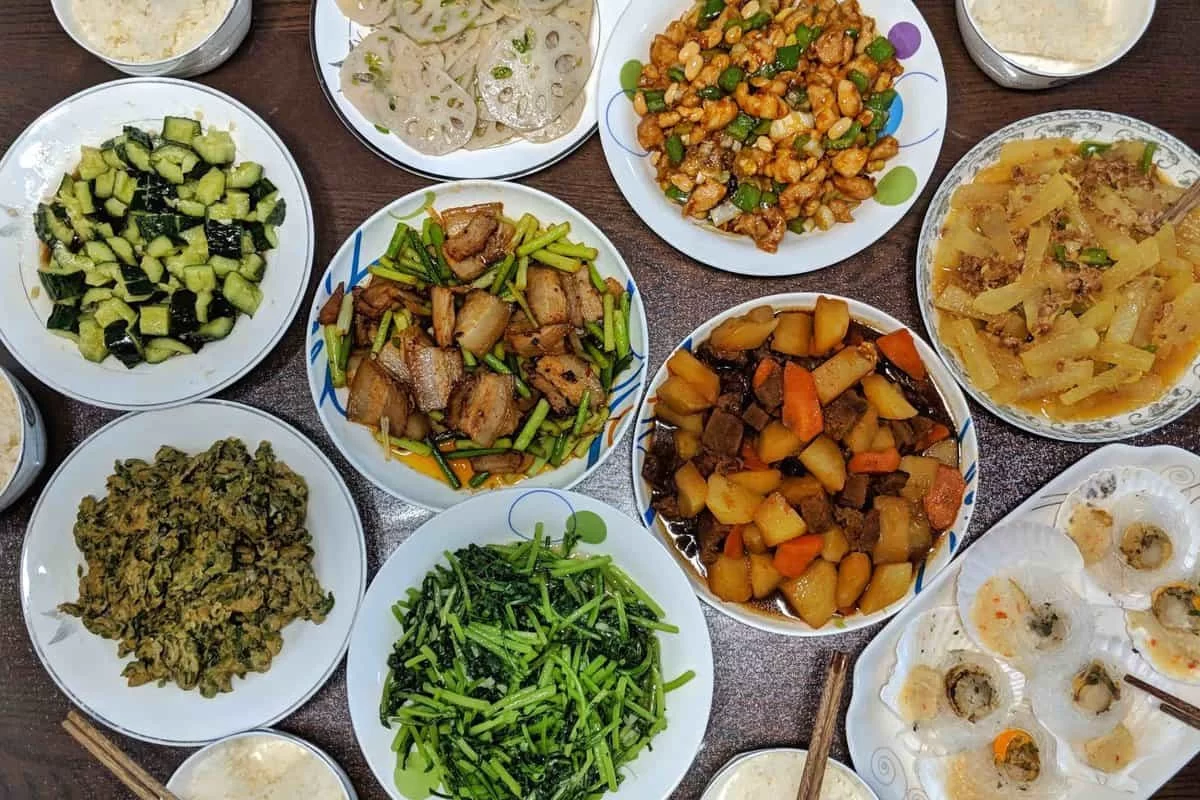Explore Chinese Cuisine: Authentic Recipes and Cultural Insights
- Introduction to Chinese Cuisine
- Regional Differences in Chinese Cuisine
- Popular Chinese Dishes
- Chinese Cooking Techniques
- Explore More Chinese Recipes
Introduction to Chinese Cuisine
Chinese cuisine is one of the oldest and most diverse food traditions in the world. It has been evolving for thousands of years, with regional differences, unique cooking methods, and distinctive flavors that vary from province to province. Chinese food is known for its balance of flavors: sweet, sour, salty, and bitter, as well as the clever use of textures, colors, and ingredients.
The origins of Chinese cuisine can be traced back to the ancient dynasties, each contributing to the refinement of ingredients and cooking techniques. Today, Chinese food is enjoyed worldwide, from street food stalls to high-end restaurants, and it continues to influence global culinary trends.
Regional Differences in Chinese Cuisine
One of the most fascinating aspects of Chinese cuisine is its incredible regional variety. Each region in China has its own distinctive flavors and cooking methods, shaped by the local environment, history, and cultural influences. Here are a few notable regional styles of Chinese food:
- Cantonese Cuisine: Known for its mild, fresh flavors, Cantonese food emphasizes the use of fresh ingredients like seafood, poultry, and vegetables. Classic dishes include dim sum, roast duck, and sweet-and-sour pork.
- Sichuan Cuisine: Famous for its bold, spicy, and numbing flavors, Sichuan food uses chili peppers and Sichuan peppercorns to create a distinctive "mala" (麻辣) taste. Dishes like mapo tofu, kung pao chicken, and spicy hot pots are beloved around the world.
- Shandong Cuisine: Focused on hearty, savory flavors, Shandong cuisine is known for its seafood and soups. Dishes are often simple but rich in flavor, such as braised prawns and hot and sour soup.
- Jiangsu Cuisine: This cuisine is characterized by its emphasis on fresh ingredients, particularly fish and poultry, prepared in delicate, lightly sweet sauces. Jiangsu is famous for its sweet and savory dishes like sweet and sour fish and braised chicken with chestnuts.
- Hunan Cuisine: Like Sichuan, Hunan cuisine is known for its bold, spicy dishes, but with an even stronger focus on the use of fresh chili peppers. Dishes such as stir-fried beef with chili and Hunan-style pork are perfect examples of the heat and flavors that define this region.
Popular Chinese Dishes
When we think of Chinese food, several iconic dishes come to mind. These dishes have transcended regional boundaries and are beloved worldwide. Here are a few popular Chinese dishes that have become staples of Chinese cuisine:
- Sweet and Sour Chicken: A classic favorite that balances tangy, sweet, and savory flavors, this dish is a hit at Chinese restaurants. It's made by battering chicken and then tossing it in a sauce made of vinegar, sugar, and ketchup.
- Beef with Broccoli: A dish that pairs tender beef with crisp broccoli in a savory soy-based sauce, Beef with Broccoli is a popular choice for its simple yet satisfying flavors.
- Kung Pao Chicken: A Sichuan dish that combines chicken with peanuts, chili peppers, and a tangy soy-based sauce. Its bold flavors and a perfect balance of heat, sweetness, and saltiness make it a crowd favorite.
- Chop Suey: A dish that has gained popularity in the West, chop suey is a stir-fry with mixed vegetables, often accompanied by meat such as chicken, pork, or beef. While it’s not a traditional Chinese dish, it was created in the U.S. by Chinese immigrants and has become a staple in American Chinese food culture.
- Dim Sum: Dim sum refers to a variety of small, bite-sized dishes served in steamer baskets or on small plates. From dumplings to buns and pastries, dim sum is perfect for sharing and trying a variety of flavors in one meal.
Chinese Cooking Techniques
Chinese cuisine involves a variety of cooking methods that bring out the unique flavors and textures of ingredients. Understanding these techniques can help you recreate authentic Chinese dishes at home:
- Stir-Frying: Stir-frying is one of the most popular and fastest cooking techniques in Chinese cuisine. It involves cooking small, evenly cut pieces of ingredients quickly in a wok over high heat. This technique helps to retain the freshness and crunchiness of vegetables and proteins.
- Steaming: Steaming is a traditional method that preserves the natural flavors and textures of ingredients. Dim sum, fish, and buns are often steamed, allowing the ingredients to cook gently without losing their nutrients.
- Deep-Frying: Many Chinese dishes are deep-fried, creating crispy textures. This method is often used for chicken, pork, and tofu, as well as for creating crispy batters for various meats and vegetables.
- Slow Braising: Slow braising involves cooking ingredients slowly in liquid, which infuses them with rich flavors. Dishes like braised pork belly and soy-braised chicken are examples of this method.
Explore More Chinese Recipes
Whether you're a novice or an experienced cook, diving into Chinese cuisine offers endless possibilities. From stir-fries to stews, dumplings to noodle soups, Chinese food has something for everyone. If you're looking to try your hand at making these dishes at home, there are plenty of resources available that can help you get started. One great place to begin is GoChinaRose, where you can find the finest ingredients and recipes for authentic Chinese cooking.
By exploring the diverse world of Chinese food, you'll not only discover new flavors but also gain a deeper understanding of the rich cultural traditions behind each dish. Start cooking today and bring the taste of China to your kitchen!








